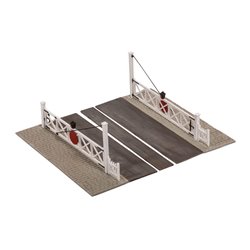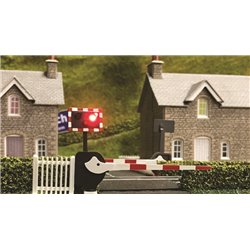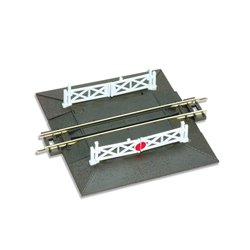Tree trunks are actually grey in colour and not brown as you would think. The next time you are out and about just...
No products
Product successfully added to your shopping cart
There are 0 items in your cart. There is 1 item in your cart.
Search Tips
Christmas and New Year
We are dispatching orders every weekday apart from Christmas Day, Boxing Day and New Year's Day.
If you order is time critical, select next day delivery at checkout.
The shop in Sandown is closed from 25th December, reopening on 30th December.
What are my options for motorising a level crossing on my layout ?
Motorising a level crossing can add a realistic touch to the operation of a layout. There are several options available to achieve this effect.
Let's explore a few of them:
- Servo motors : Servo motors are commonly used in model railway layouts to automate various movements, including operating level crossings. These motors can be controlled using a servo controller or a microcontroller, allowing an operator to program the motion of the level crossing gates. Servo motors offer smooth and precise movement, making them a popular choice for motorising level crossings.
- Solenoid motors : Solenoid motors are another option for motorising a level crossing. These motors use electromagnets to create linear motion, which can be used to open and close the crossing gates. Solenoid motors are relatively simple to install and can be controlled using a switch or a digital command control (DCC) system.
- Motorised gate kits : Some manufacturers offer motorised gate kits specifically designed for model railway level crossings. These kits usually include all the necessary components, such as motors, gears and linkages, to motorise the gates. They often come with detailed instructions for installation and can be a convenient option for those who prefer a ready-made solution.
- DIY solutions : Those who enjoy tinkering and building their own mechanisms can explore DIY solutions for motorising a level crossing. This could involve using small DC motors, gears and linkages to create a custom system that suits the specific layout requirements. DIY solutions offer flexibility and the opportunity to experiment with different designs.
When selecting a motorisation option for a level crossing, consider factors such as the scale of the layout (e.g., OO/HO, O, OO9 and N Gauges), the level of automation desired set against the available budget. It's also important to ensure that the motorisation system chosen is compatible with any existing control system, such as DCC or analogue.
Remember to always refer to the manufacturer's instructions and don't forget that advice and guidance can be sought from a number of different sources, including the Internet and local model railway societies.
Click here to receive the tips weekly in your mailbox. You can unsubscribe at any time.










